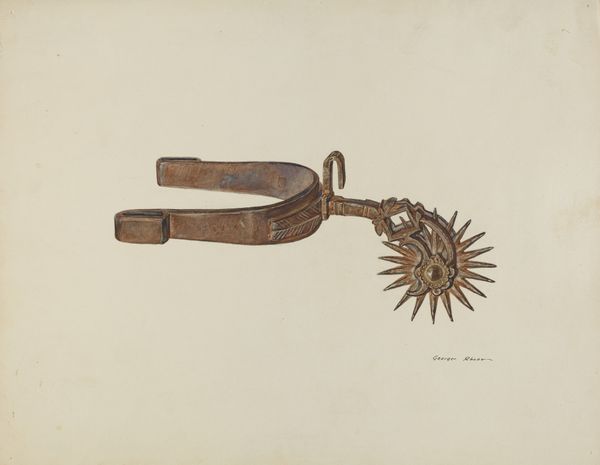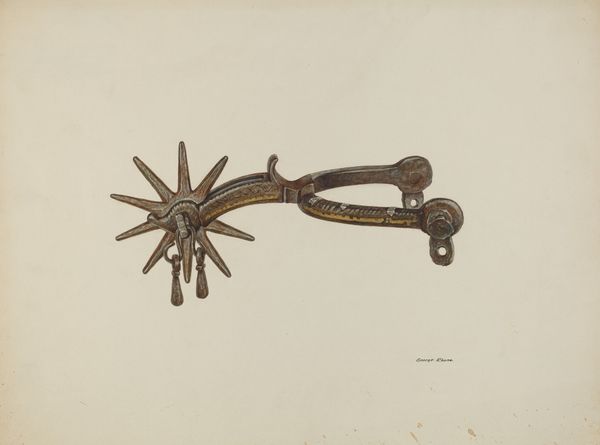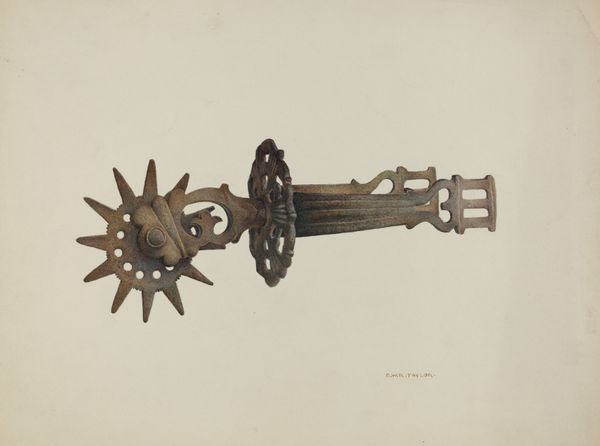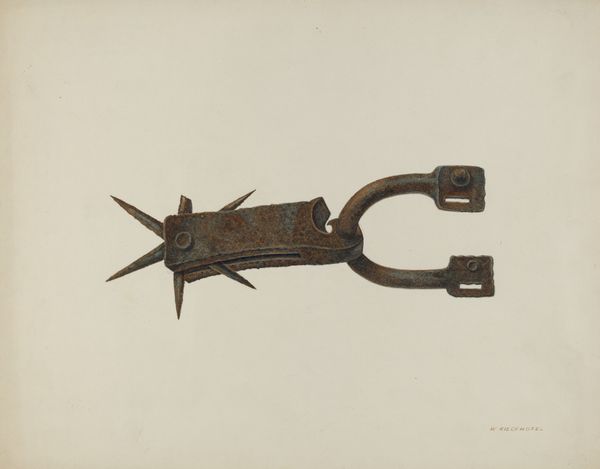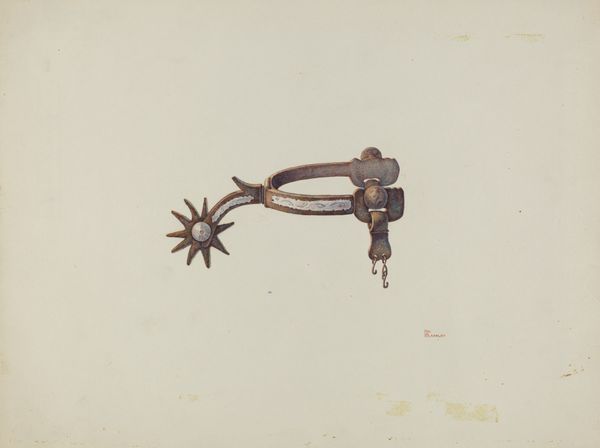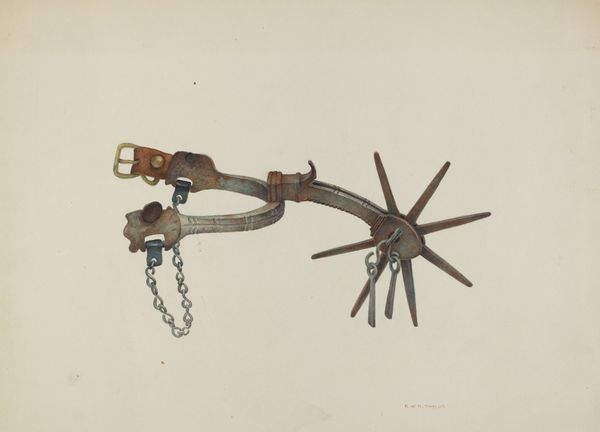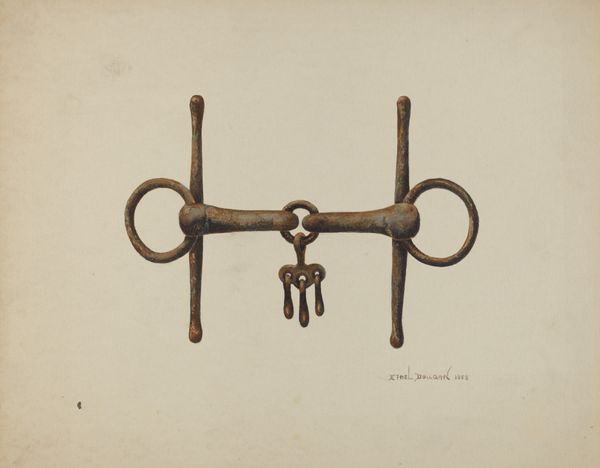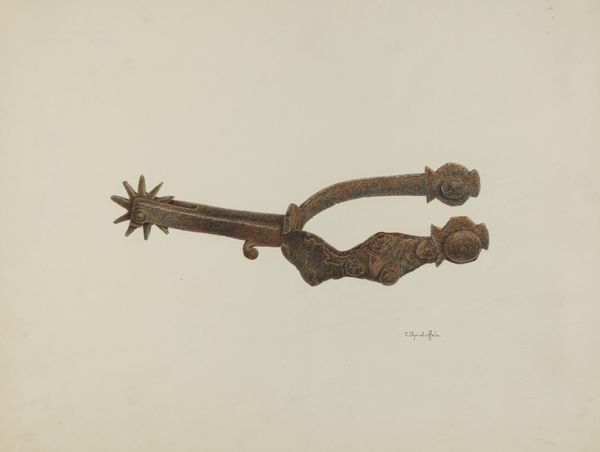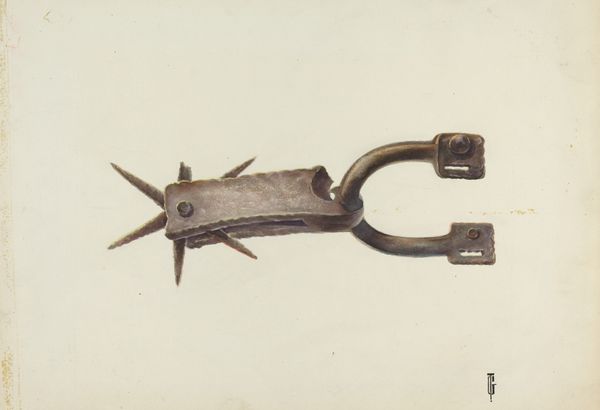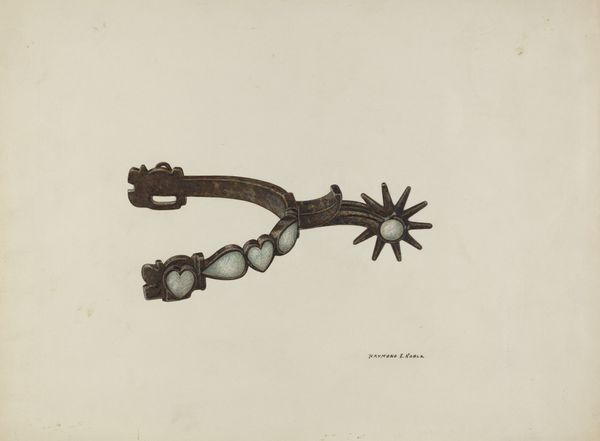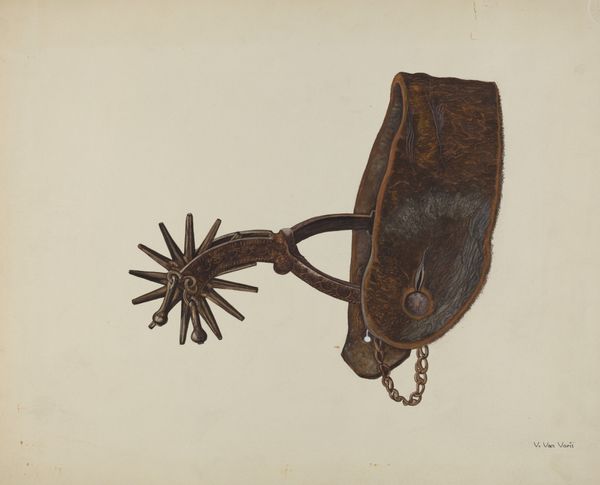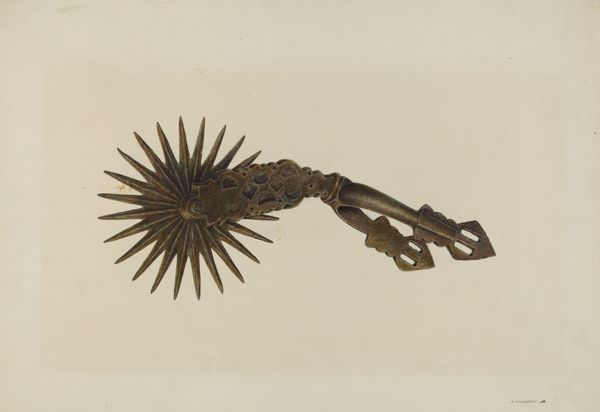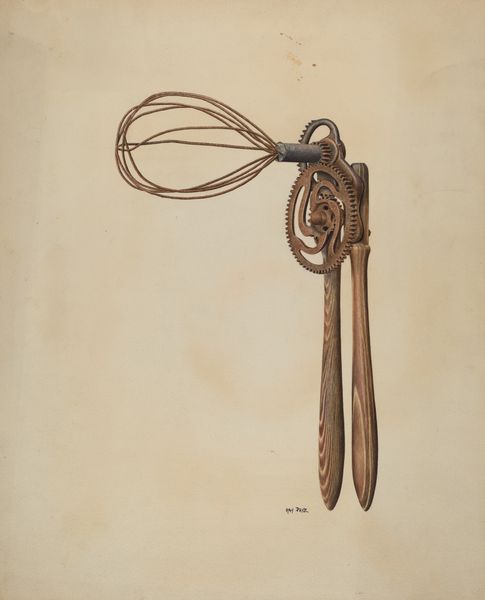
drawing, watercolor, pencil
#
pencil drawn
#
drawing
#
pencil sketch
#
charcoal drawing
#
watercolor
#
pencil drawing
#
pencil
#
watercolour illustration
#
watercolor
#
realism
Dimensions: overall: 26.6 x 35.5 cm (10 1/2 x 14 in.)
Copyright: National Gallery of Art: CC0 1.0
Curator: This drawing, entitled "Spur," dates from around 1941 and is by Cornelius Christoffels. It's rendered in pencil and watercolor on paper. Editor: My immediate reaction is its utilitarian beauty, almost a relic of a bygone era of labor. There's a weight to the object, a sense of purpose hammered into metal. Curator: Absolutely. Consider how the spur functions as a symbolic extension of the rider's will. It bridges human intention with the animal, creating a cultural vocabulary of control, but also, perhaps, a stylized grace when seen within the traditions of horsemanship. Editor: The way it is rendered feels deliberately detached. We aren’t getting a romantic vision of the West, more like a catalog entry. You see the joins, the material, the object as artifact. Do we know why Christoffels made this drawing? Curator: We don't have definitive answers about its precise origin, but we might speculate about its context, produced at a moment in the 20th century when the imagery of the West still resonated strongly in the popular imagination—think of cowboy movies and the construction of national identity. Editor: So is it valorizing or examining the mythology? What does this specific spur tell us about labour, the specific artisan who made it? Is this spur part of the working kit or meant for show? Curator: These are vital questions. We should consider the craft itself. Spurs are functional objects. Yet the embellishment speaks to a blending of utility and pride in craftsmanship. There’s a story etched into this spur about what was considered "good" work at that moment in time. Editor: Precisely! The labor, the choices of metal, the tooling involved...these all tell a story. This spurs the viewer into further considerations about material culture. Curator: A fascinating dive into the relationship between human intent and the objects that reflect our values. Editor: Agreed! Examining everyday objects can speak volumes.
Comments
No comments
Be the first to comment and join the conversation on the ultimate creative platform.
